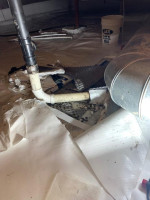Hops
|
Amount
|
Variety
|
Cost
|
Type
|
AA
|
Use
|
Time
|
IBU
|
Bill %
|
|
1 oz |
Centennial1 oz Centennial Hops |
|
Pellet |
10 |
Boil
|
60 min |
35.19 |
28.6% |
|
1 oz |
Cascade1 oz Cascade Hops |
|
Pellet |
7 |
Boil
|
15 min |
12.22 |
28.6% |
|
1 oz |
Cascade1 oz Cascade Hops |
|
Pellet |
7 |
Boil
|
5 min |
4.91 |
28.6% |
|
0.50 oz |
Centennial0.5 oz Centennial Hops |
|
Pellet |
10 |
Dry Hop
|
7 days |
|
14.3% |
|
3.50 oz
/ $ 0.00
|
Hops Summary
|
Amount
|
Variety
|
Cost
|
IBU
|
Bill %
|
|
1.50 oz |
Centennial (Pellet) 1.4999999965689 oz Centennial (Pellet) Hops |
|
35.19 |
42.9% |
|
2 oz |
Cascade (Pellet) 1.9999999954251 oz Cascade (Pellet) Hops |
|
17.13 |
57.2% |
|
3.50 oz
/ $ 0.00
|
Mash Guidelines
|
Amount
|
Description
|
Type
|
Start Temp
|
Target Temp
|
Time
|
|
23.25 qt |
Single Infusion |
Infusion |
164.7 °F |
153 °F |
60 min |
|
|
Mash out |
Temperature |
153 °F |
170 °F |
20 min |
|
|
|
Vorlauf |
-- |
-- |
15 min |
|
15.5 qt |
|
Batch Sparge |
-- |
170 °F |
15 min |
Starting Mash Thickness:
1.5 qt/lb
Starting Grain Temp:
64 °F |
Target Water Profile
Balanced Profile II
| Ca+2 |
Mg+2 |
Na+ |
Cl- |
SO4-2 |
HCO3- |
|
150 |
15 |
19 |
62.5 |
125 |
150 |
Rice Hulls:
Add 1lb for every 5lbs for grain to help with heat distribution.
Roasted Barley:
Add after mash-out, during vorlauf.
Chocolate Malt:
Add after mash-out, during vorlauf.
Crystal Malt:
Add after mash-out, during vorlauf.
Condition at least 4 weeks.
For an American Stout, you want a water profile that enhances the bold, roasty flavors while supporting a firm bitterness. Here’s a good starting point for an American Stout water profile:
Calcium (Ca): 100-150 ppm
Magnesium (Mg): 10-20 ppm
Sodium (Na): 10-25 ppm
Chloride (Cl): 50-75 ppm
Sulfate (SO₄): 100-150 ppm
Bicarbonate (HCO₃): 100-200 ppm
Key Considerations
Sulfate to Chloride Ratio: A slightly higher sulfate to chloride ratio (around 2:1) will enhance hop bitterness, which is characteristic of the American Stout style.
Bicarbonate: Higher bicarbonate levels help balance the acidic nature of the dark roasted malts. |
|
Mash Chemistry and Brewing Water Calculator
|
Notes
Overall Impression: This is a strong, highly roasted, bitter, hoppy, dark stout. The body and dark flavors are typical of stouts, with a more aggressive American hop character and bitterness.
Aroma: Moderate to solid roast aroma, often with a roasted coffee or dark chocolate quality. Burnt or charcoal aromas are acceptable at low levels. Medium to very low hop aroma, often with a citrusy or resiny character. Medium esters are optional. Light alcohol is optional. It should not seem sharp, acrid, or acidic.
Appearance: It is generally jet-black, although some may appear dark brown. It has a large, persistent head that is light tan to light brown in color and usually opaque.
Flavor: Moderate to very high roasted flavors, often tasting of coffee, dark or bittersweet chocolate, or roasted coffee beans. It may taste of slightly burnt coffee grounds, but this character should not be prominent. Low to medium malt sweetness, often with rich chocolate or caramel flavors. Medium to high bitterness. It has a low to high-hop flavor, generally citrusy or resiny. Medium to dry finish, occasionally with a lightly burnt quality. Low esters are optional, but light but smooth alcohol flavor is optional.
Mouthfeel: Medium to whole body. It can be somewhat creamy. It can have a bit of roast-derived astringency, but this character should not be excessive. Medium-high to high carbonation. Light to moderately intense alcohol warmth, but smooth and not excessively hot.
Comments: Breweries express individuality by varying the roasted malt profile, sweetness, flavor, and finishing hops. Generally, it has bolder roasted malt flavors and hopping than other traditional stouts (except Imperial Stouts) and is becoming increasingly complex to find.
History: A modern craft beer and homebrew style that applied a more aggressive American hopping regime to a strong traditional English or Irish Stout. The homebrew version was once known as West Coast Stout, a standard naming scheme for a more highly hopped beer.
Characteristic Ingredients: Common American base malts, yeast, and hops. Varied use of dark and roasted malts, as well as caramel-type malts. Adjuncts or additives may be present in low quantities to add complexity.
Style Comparison: Like a hoppy, bitter, intensely roasted Irish Extra Stout. It is much more roast and body than a Black IPA. More significant, stronger versions belong in the Imperial Stout style. Stronger and more assertive than American Porter, particularly in the dark malt or grain additions and hop character.
Vital Statistics: OG: 1.050 – 1.075
IBUs: 35 – 75 FG: 1.010 – 1.022
SRM: 30 – 40 ABV: 5.0 – 7.0%
Commercial Examples: Avery Out of Bounds Stout, Bell’s Kalamazoo Stout, Deschutes Obsidian Stout, Sierra Nevada Stout, Trillium Secret Stairs
Tags: high-strength, dark-color, top-fermented, north-America, craft-style, stout-family, bitter, roasty, hoppy

Last Updated and Sharing

- Public: Yup, Shared
- Last Updated: 2024-11-15 19:39 UTC
For quick copying and pasting to a text based forum or email.
Click the Download as HTML file button below.
Recipe costs can be adjusted by changing the batch size. They won't be saved but will give you an idea of costs if your final yield was different.
|
Cost $ |
Cost % |
| Fermentables |
$ |
|
Steeping Grains
(Extract Only) |
$ |
|
| Hops |
$ |
|
| Yeast |
$ |
|
| Other |
$ |
|
| Cost Per Barrel |
$ 0.00 |
|
| Cost Per Pint |
$ 0.00 |
|
| Total Cost |
$ 0.00 |
|
Discussion about this recipe:
